Lookin’ to Get Out vs. Lookin’ to Get Out: Revisionist History Vol. 1
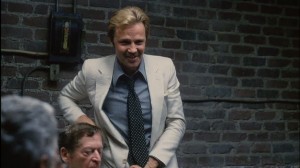 David Fincher’s Alien 3 is the best example of a very flawed film that was improved in a longer version, while still retaining all of those very same flaws. The theatrical cut, running just under two hours, has very little character development. And, therefore, apart from Sigourney Weaver’s character, Ripley, doesn’t make you care about anyone else. There are hints here and there of skipped-over backstory. But it’s mostly a muddled experience that’s made tolerable by some incredible art direction and camerawork.
David Fincher’s Alien 3 is the best example of a very flawed film that was improved in a longer version, while still retaining all of those very same flaws. The theatrical cut, running just under two hours, has very little character development. And, therefore, apart from Sigourney Weaver’s character, Ripley, doesn’t make you care about anyone else. There are hints here and there of skipped-over backstory. But it’s mostly a muddled experience that’s made tolerable by some incredible art direction and camerawork.
If there’s anything that undermines the movie, it is the primitive CGI of the Alien crawling around and the endless chase around the hallways of the prison set — as one prisoner after another narrowly escapes death and closes the door on the Alien. This laborious action sequence has some interesting camera angles. But it’s so dull and repetitive, taking up what feels like the majority of the third act, that the eventual martyr conclusion of the film is a relief rather than the moving drama it should have been.
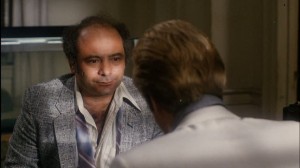 The “assembly cut” of Alien 3 is ½ an hour longer than the theatrical version. And while it still has the crummy CGI (some of which was tinkered with for the 2003 DVD release) and the boring chase, it takes up less of the film, and becomes 20 measly minutes among the 145 that you can ignore. The extra footage and changes are an improvement in terms of concern for the characters and explanations for their predicament. But mostly, this assembly cut proves that sometimes more is less. (More distractions, less annoying.)
The “assembly cut” of Alien 3 is ½ an hour longer than the theatrical version. And while it still has the crummy CGI (some of which was tinkered with for the 2003 DVD release) and the boring chase, it takes up less of the film, and becomes 20 measly minutes among the 145 that you can ignore. The extra footage and changes are an improvement in terms of concern for the characters and explanations for their predicament. But mostly, this assembly cut proves that sometimes more is less. (More distractions, less annoying.)
Hal Ashby’s Lookin’ To Get Out, just released in a longer version that’s supposedly closer to Ashby’s original intent, follows Alien 3’s example — but in reverse.
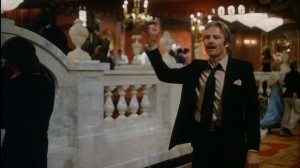 Ashby had the best run of any director in the 1970s, chronologically from The Landlord to Harold and Maude to The Last Detail to Shampoo to Bound For Glory to Coming Home and, finally, Being There. You’d think that would allow Ashby a little leeway. But his four theatrically released films that followed (until his death in 1988) were shelved and/or taken away from him in post-production, including Second-Hand Hearts, Lookin’ To Get Out, The Slugger’s Wife and 8 Million Ways to Die . This new cut of Lookin’ To Get Out was one that Ashby had hidden from the distributor, Lorimar, and was recently championed by Lookin’ star and screenwriter Jon Voight. Obviously, Voight had an emotional investment in the project — no doubt depressed by its initial failure — and wanted to prove his original instincts correct.
Ashby had the best run of any director in the 1970s, chronologically from The Landlord to Harold and Maude to The Last Detail to Shampoo to Bound For Glory to Coming Home and, finally, Being There. You’d think that would allow Ashby a little leeway. But his four theatrically released films that followed (until his death in 1988) were shelved and/or taken away from him in post-production, including Second-Hand Hearts, Lookin’ To Get Out, The Slugger’s Wife and 8 Million Ways to Die . This new cut of Lookin’ To Get Out was one that Ashby had hidden from the distributor, Lorimar, and was recently championed by Lookin’ star and screenwriter Jon Voight. Obviously, Voight had an emotional investment in the project — no doubt depressed by its initial failure — and wanted to prove his original instincts correct.
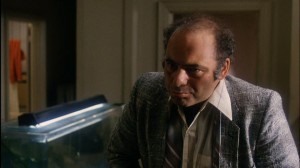
Acid Reflux is a bitch.
But the important thing to remember about Jon Voight in his recent capacity as a creative force is that he also produced Baby Geniuses and Karate Dog, in which he starred as the villain. Is it fair to judge Voight on his choices, based on his attempt to exploit the mentally ill children’s market? Does everything he did with producer Steven Paul and director Bob Clark nullify years of challenging and quality acting work? And wasn’t it Ashby’s edit that had been hacked down by soulless moneymen, not Voight’s?
However, just because a movie loses 15 minutes doesn’t always mean it suddenly becomes a bastardized version of a classic. Ashby’s lack of control on the set of Lookin’ To Get Out seems apparent right from the start; simply by letting Voight show up with Bugs Bunny teeth and laughing at every one of his unfunny jokes.* In the longer cut, the laughter is contagious, as Voight’s co-star, Burt Young, joins him whenever possible (a better title for the movie might have been Slow Gas Leak). The longer version also tries to turn Voight into a misguided, lovable loser. As opposed to the choppy theatrical version, where he’s just a curt asshole.
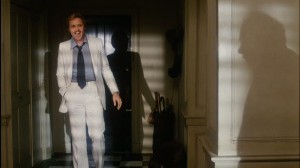 Having Voight be unlikable makes the movie easier to swallow; you don’t root for him during his reckless gambling travails from NY to Las Vegas — you just observe. And Burt Young’s relationship with Voight begins to make more sense as well; Young’s just an enabling punching bag. In the longer version of the film, Voight is portrayed as wild and charming and Young is just a softie (instead of a sap) with the subtext of the love that dare not speak its name with Voight. Because the story never makes sense from point to point (Voight owes some gangsters some money and so he takes Young along with him to Las Vegas to… Um… It’s never quite clear what the actual plan is), the faster it goes by, the easier it is to ignore the logical fallacies.
Having Voight be unlikable makes the movie easier to swallow; you don’t root for him during his reckless gambling travails from NY to Las Vegas — you just observe. And Burt Young’s relationship with Voight begins to make more sense as well; Young’s just an enabling punching bag. In the longer version of the film, Voight is portrayed as wild and charming and Young is just a softie (instead of a sap) with the subtext of the love that dare not speak its name with Voight. Because the story never makes sense from point to point (Voight owes some gangsters some money and so he takes Young along with him to Las Vegas to… Um… It’s never quite clear what the actual plan is), the faster it goes by, the easier it is to ignore the logical fallacies.
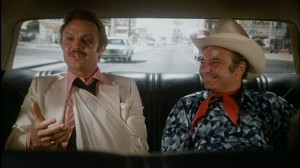 And the constant cackling, which is so grating in the longer cut, seems far more appropriate in the theatrical cut. First because there’s far less of it. Second because it happens right after some calamitous occasion, as if to say, “We’re such idiots.” In the longer cut, while laughing, it isn’t clear whether Voight is scared, confused, fine-tuning a very bad stand-up act, or just can’t improvise anything interesting and Ashby forgets to edit it out. Ashby’s instincts are so off throughout Lookin’ To Get Out that he only accentuates his major weaknesses as a filmmaker — plot twists, slapstick (the endless fistfight conclusion), chase sequences (there’s a dreadful Benny Hill style-chase that goes on for 10 minutes in the long cut, but luckily only two in the short version, like the opposite of Alien 3), and lots of screaming that eschews any character development or scenes of insight.
And the constant cackling, which is so grating in the longer cut, seems far more appropriate in the theatrical cut. First because there’s far less of it. Second because it happens right after some calamitous occasion, as if to say, “We’re such idiots.” In the longer cut, while laughing, it isn’t clear whether Voight is scared, confused, fine-tuning a very bad stand-up act, or just can’t improvise anything interesting and Ashby forgets to edit it out. Ashby’s instincts are so off throughout Lookin’ To Get Out that he only accentuates his major weaknesses as a filmmaker — plot twists, slapstick (the endless fistfight conclusion), chase sequences (there’s a dreadful Benny Hill style-chase that goes on for 10 minutes in the long cut, but luckily only two in the short version, like the opposite of Alien 3), and lots of screaming that eschews any character development or scenes of insight.
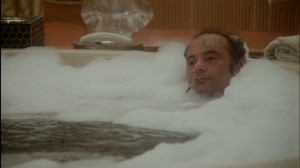 The intended intrigue and surprises in Lookin’ To Get Out are either confusing or poorly established. From the moment Young (playing Jerry Feldman) and Voight (playing Alex Kovac) arrive in Las Vegas, everything becomes rather hazy — even visually — as opposed to the hideous blown-out lighting of the NY scenes. Voight’s idea in Las Vegas is to have Young pose as someone important at a hotel so they can score a free room. Voight drops the name of the owner of the hotel, Bernie Gold, to the concierge who checks with the corporate staff on how Jerry Feldman should be treated. Coincidentally, it turns out that Jerry Feldman gets the best suite in the hotel, meaning Ashby and Voight want us to believe that Bernie Gold has someone who is also named Jerry Feldman on his list of high rollers. Or maybe they didn’t work it out that far, because one scene after another has that sort of garbled logic. Voight’s plan to win money to pay back gangsters (two schlubby middle-aged guys named Harry and Joey) involves randomly running into a former great card player, Smitty (played by Bert Remsen), who happens to be a bell-hop/waiter at the very same hotel and even delivers Alex and Jerry’s bags to their room.
The intended intrigue and surprises in Lookin’ To Get Out are either confusing or poorly established. From the moment Young (playing Jerry Feldman) and Voight (playing Alex Kovac) arrive in Las Vegas, everything becomes rather hazy — even visually — as opposed to the hideous blown-out lighting of the NY scenes. Voight’s idea in Las Vegas is to have Young pose as someone important at a hotel so they can score a free room. Voight drops the name of the owner of the hotel, Bernie Gold, to the concierge who checks with the corporate staff on how Jerry Feldman should be treated. Coincidentally, it turns out that Jerry Feldman gets the best suite in the hotel, meaning Ashby and Voight want us to believe that Bernie Gold has someone who is also named Jerry Feldman on his list of high rollers. Or maybe they didn’t work it out that far, because one scene after another has that sort of garbled logic. Voight’s plan to win money to pay back gangsters (two schlubby middle-aged guys named Harry and Joey) involves randomly running into a former great card player, Smitty (played by Bert Remsen), who happens to be a bell-hop/waiter at the very same hotel and even delivers Alex and Jerry’s bags to their room.
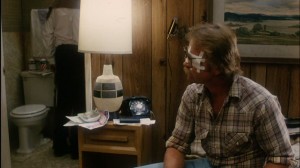
Eyepatchalypse Now!
These coincidences become more glaring when spread out every 10 minutes. But the shorter cut skips over even attempting an explanation most of the time, acknowledging itself as a fantasy cartoon. The fractured nature of the movie in the theatrical cut matches the way that Alex’s brain works. The mysterious relationship between Smitty and the man with the patched-up eye, who is either his roommate, lover**, partner, colleague, or all of the above, adds a level of creepiness to the scattered mess of the theatrical cut. In the extended cut, this mystery man has some poorly explained connection to the gambling scam. (The scam is, Smitty’s good at blackjack and Alex and Jerry stake him the money and watch him win. Really. That’s it.) And the mystery man contributes to a bewildering final scene that runs counter to anything in the previous two hours.
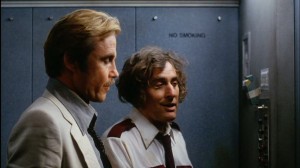 None of this is to suggest that the theatrical cut of Lookin’ to Get Out is a well-made film, or even a moderately entertaining one. It’s just that the very few pleasures of the extended cut are spread out — such as the hippie doorman who’s like an older version of Crispin Glover (or a cast member of Repo Man, which he is). He has an energy that is unforced as opposed to Voight’s hamming. Burt Young does his usual bit, he’s either mumbling or truly miffed, meaning his voice goes from gravelly and cracked to squeaky and whiny. His irritating laugh does have a precedent; he employed the same tactic in Robert Aldrich’s meretricious The Choirboys made a few years previous to Lookin’ to Get Out, and playing a character aptly named Scuzzi.
None of this is to suggest that the theatrical cut of Lookin’ to Get Out is a well-made film, or even a moderately entertaining one. It’s just that the very few pleasures of the extended cut are spread out — such as the hippie doorman who’s like an older version of Crispin Glover (or a cast member of Repo Man, which he is). He has an energy that is unforced as opposed to Voight’s hamming. Burt Young does his usual bit, he’s either mumbling or truly miffed, meaning his voice goes from gravelly and cracked to squeaky and whiny. His irritating laugh does have a precedent; he employed the same tactic in Robert Aldrich’s meretricious The Choirboys made a few years previous to Lookin’ to Get Out, and playing a character aptly named Scuzzi.
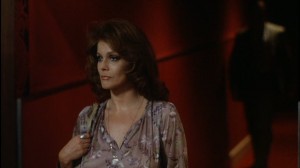 The Choirboys is actually a good film to compare to Lookin’ To Get Out. That’s true even if, instinctually, the choice would be another film about gambling addict losers in Las Vegas — Robert Altman’s masterpiece, California Split. Altman’s film is patient, not so concerned with plot, and has very well-drawn characters and funny dialogue. The Choirboys is a complete mess, ugly, mean, hateful and unpleasant. These are traits it shares with Aldrich’s final film, also co-starring Burt Young, the overlong women’s wrestling comedy …All the Marbles.
The Choirboys is actually a good film to compare to Lookin’ To Get Out. That’s true even if, instinctually, the choice would be another film about gambling addict losers in Las Vegas — Robert Altman’s masterpiece, California Split. Altman’s film is patient, not so concerned with plot, and has very well-drawn characters and funny dialogue. The Choirboys is a complete mess, ugly, mean, hateful and unpleasant. These are traits it shares with Aldrich’s final film, also co-starring Burt Young, the overlong women’s wrestling comedy …All the Marbles.
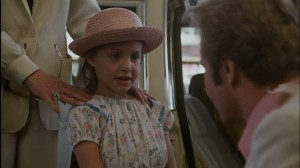
A young Angelina Jolie. Pedophiles rejoice!
Lookin’ To Get Out isn’t built from the sheer lowbrow misanthropy of those two films. But it is misogynistic in similar ways; women are whores or manipulative shrews in all three films, even when they’re the heroines. This is true of Ann-Margret’s totally thankless “liaison” role in Lookin’ to Get Out, where she looks confused and braless as Voight, as her former lover, acts up a storm around her. The secret she’s keeping isn’t a surprise so much as a nag (and an excuse for an Angelina Jolie cameo, as well as a Sigfried and Roy stage show), since her part could have been eliminated without it affecting the story negatively. And Alex and Jerry’s obvious chemistry could have been made more overt. According to Lookin’ to Get Out, it makes perfect sense for straight guys in their 40s and 50s to have male roommates in buildings fancy enough to have doormen.
This denial extends to the featurette on the new Lookin’ to Get Out Warner Brothers disc, where the entire subject of the movie being buried for two years and being taken away from Ashby isn’t even broached. There’s the suggestion that Lookin’ to Get Out is a lost, important work. But then, I’m sure Richard Brooks, while making his final film — another movie about whitebread losers gambling at the MGM Grand*** — thought his absolutely delirious and hilariously bad Fever Pitch was profound, too.
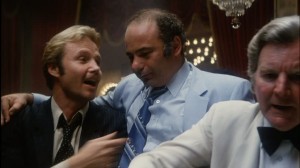
Did I tell you the one about the closeted gay couple?
Neither cut of Lookin’ to Get Out is as entertaining as Fever Pitch, which leaves Ashby’s film in the neighborhood of a poorly paced, forgettable and draggy failure — as opposed to what Brooks managed to accomplish, which was pure and unadulterated lunacy. And Brooks’ didn’t even have material with Siegfried and Roy to fall back on.
* The longer cut opens with the sounds of a sputtering car engine, which could not have been more appropriate for the two hours that follow.
** The new, extended cut has a rather distracting amount of homophobic jabs by Harry and Joey and continuous re-assertions of the various characters’ heterosexuality. None of this material is in the theatrical cut, suggesting that Ashby might have been uncomfortable with the nagging obviousness of his character’s sexual interests.
*** Both Lookin’ to Get Out and Fever Pitch have scenes where a mobster stabs the protagonist through the hand with a knife as punishment for some outstanding gambling losses.



